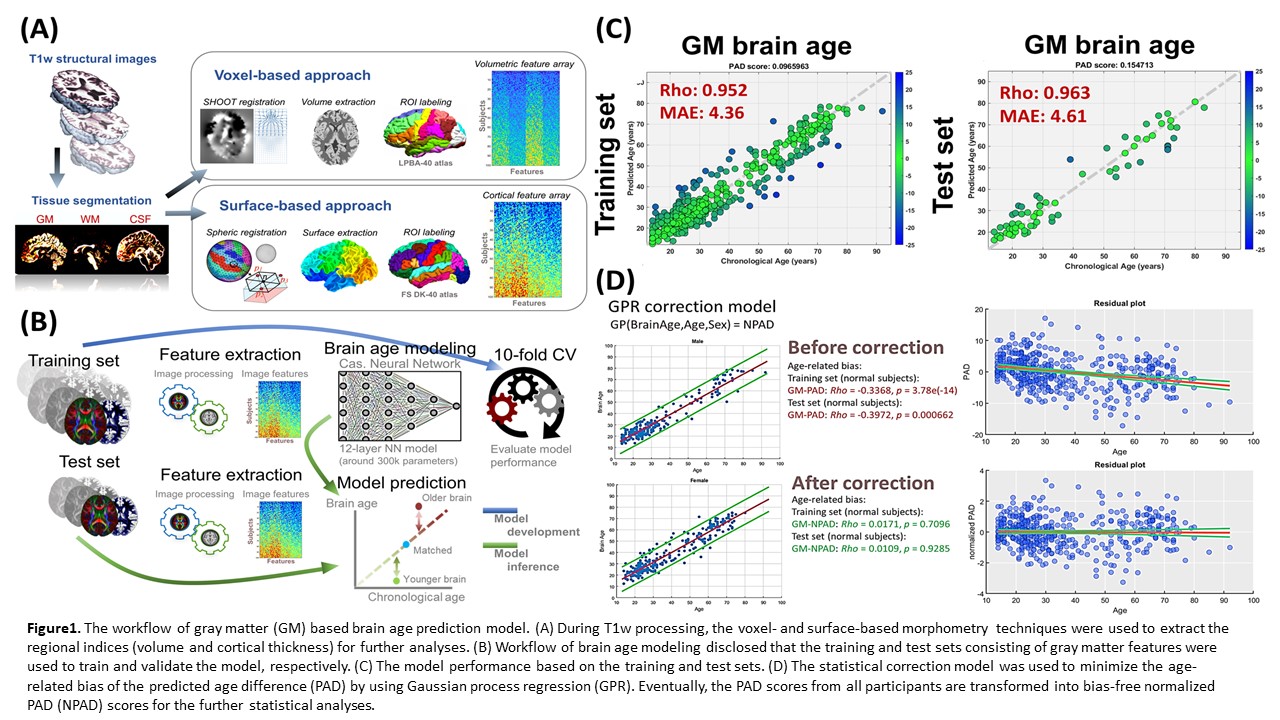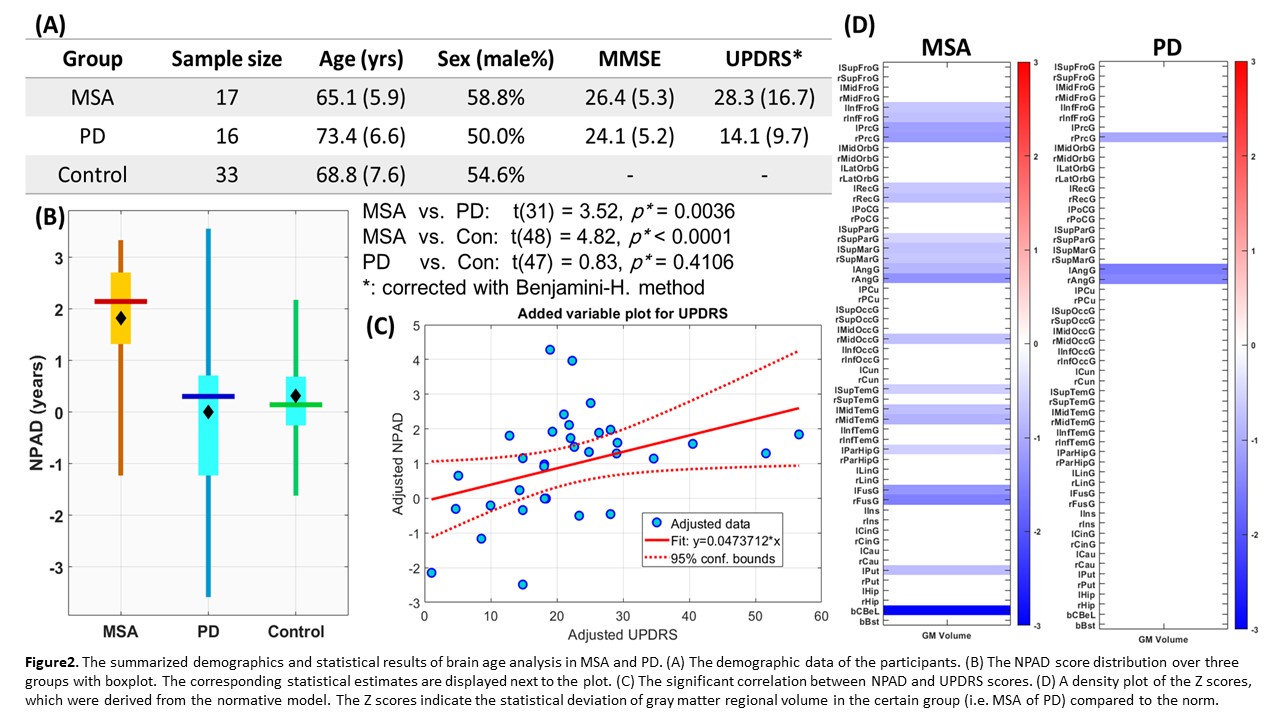Category: Neuroimaging (Non-PD)
Objective: To investigate the “brain age” signature in multiple system atrophy (MSA) and Parkinson’s disease (PD), and its correlation with motor and cognitive performance.
Background: Although “brain age estimation” has already been widely tested in various neurodegenerative disease, whether abnormal predicted brain age by grey matter (GM) volume change contributes to worse disease severity of MSA and PD remains elusive.
Method: Patients with PD or MSA were enrolled at the Department of Neurology, National Taiwan University Hospital. The Unified PD Rating Scale (UPDRS) Part III and Mini-Mental State Exam (MMSE) were evaluated. T1w images by 3T MRI (TIM Trio, Siemens) was acquired for brain age analysis processed by CAT12 software1 (Fig1-A). The brain age model was created using cascade neural network architecture based on 473 healthy controls (HC) and validated on another 105 HCs (Fig1-B). To remove the age-related bias, a post-hoc correction model was used to transform predicted age difference (PAD) into normalized PAD (NPAD). The NPAD scores were compared between MSA, PD, and age-matched HCs. Correlation of NPAD and UPDRS was tested after adjusting MMSE by the linear regression model. The normative model, which consisted of the GM features from HCs to estimate a statistical norm according to age and sex variables, was utilized to investigate the structural deviation of MSA and PD.
Results: Total 17 patients of MSA and 16 PD were enrolled between Dec. 2019 to March 2020. No difference in MMSE but higher UPDRS was noted in MSA (Fig. 2-A). Notably, the higher NPAD score in MSA but not PD indicated the more premature GM aging in MSA compared to the healthy population (p =0.002) (Fig. 2-B) Also, higher NPAD scores revealed more severe UPDRS status in the clinical patients (p = 0.034) (Fig. 2-C). In statistic plots of the normative model, reduced GM volume in bilateral cerebellum, fusiform gyrus, angular gyrus, inferior frontal gyrus, rectangle gyrus, and superior marginal gyrus was found in MSA. In contrast, GM volume was only reduced in bilateral angular gyrus in PD (Fig. 2-D).
Conclusion: Patients of MSA has higher predicted GM brain age than PD, probably indicating more extensive brain involvement in the early stage. Moreover, GM volume reduction in various cortical regions in MSA may implicit the pathway during disease progression. Validation studies with longitudinal follow-up are warranted.
References: 1. http://www.neuro.uni-jena.de/cat/index.html#About
To cite this abstract in AMA style:
M.C Kuo, C.L Chen, C.H Tai, W.Y Tseng, R.M Wu. Higher grey matter aging in multiple system atrophy than Parkinson’s disease [abstract]. Mov Disord. 2020; 35 (suppl 1). https://www.mdsabstracts.org/abstract/higher-grey-matter-aging-in-multiple-system-atrophy-than-parkinsons-disease/. Accessed October 22, 2025.« Back to MDS Virtual Congress 2020
MDS Abstracts - https://www.mdsabstracts.org/abstract/higher-grey-matter-aging-in-multiple-system-atrophy-than-parkinsons-disease/


